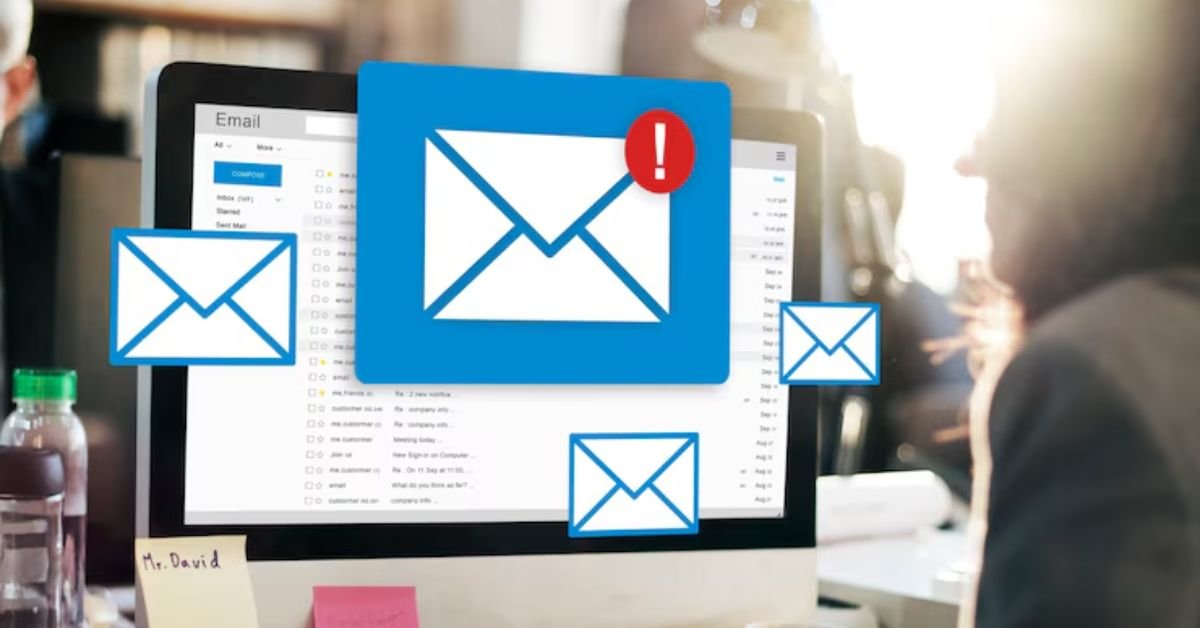How to Spy on Your Competitors’ Email Marketing Strategy
Email marketing is one of the most powerful tools businesses use to engage customers, generate leads, and increase sales. But how do you ensure your email marketing strategy is effective? One great way is to analyze what your competitors are doing. By spying on your competitors’ email marketing strategies, you can learn what works, avoid mistakes, and improve your own campaigns.
In this blog, we will discuss different ways to monitor your competitors’ email marketing strategies and how to use that information to your advantage.
Why Spy on Your Competitors’ Email Marketing?
Studying your competitors’ email marketing strategies can help you:
- Discover New Trends – You can find out which email trends are working in your industry.
- Understand Their Offers – Learn what kind of promotions and discounts they are offering.
- Improve Your Own Strategy – See what works for them and use similar tactics in your own campaigns.
- Identify Their Weaknesses – Find gaps in their strategy and take advantage of them.
By analyzing your competitors’ emails, you can gain valuable insights to improve your own marketing efforts.
1. Subscribe to Their Emails
The easiest way to spy on your competitors is to sign up for their email list. Most businesses offer newsletters, promotions, or updates through email. By subscribing, you will receive their emails directly in your inbox.
What to Observe:
- Email Frequency – How often do they send emails?
- Subject Lines – What type of subject lines do they use to attract attention?
- Email Design – How do they design their emails? Are they using images, videos, or plain text?
- Call-to-Action (CTA) – What buttons or links do they use to encourage customers to take action?
- Offers & Discounts – How often do they offer discounts and what kind of promotions do they run?
By tracking these details, you can understand how they engage their audience and apply similar techniques to your emails.
2. Use a Separate Email Address
If you want to subscribe to multiple competitors’ emails without cluttering your main inbox, create a separate email address. This will help you organize and track competitor emails more efficiently.
Some businesses may segment their emails based on user behavior. You can sign up with different email addresses to see if they send different emails based on location, interest, or activity.
3. Track Email Timing and Frequency
One important aspect of email marketing is the timing and frequency of emails.
- Do they send daily, weekly, or monthly emails?
- Are they sending more emails during holidays or special events?
- What time of the day do they send emails?
By tracking these patterns, you can identify the best times to send emails to your audience. If a competitor sends emails at a particular time and gets high engagement, you may want to test a similar schedule.
4. Analyze Their Email Content
Competitors use different content strategies to engage their audience. By analyzing their emails, you can identify what type of content they prioritize.
Key Elements to Observe:
- Promotional Emails – Are they sending discount offers, limited-time deals, or free shipping promotions?
- Educational Content – Do they share blog posts, guides, or tips?
- Customer Testimonials – Are they using customer reviews in their emails?
- Storytelling – Are they telling stories to connect with customers emotionally?
Understanding what kind of content your competitors are sending can help you create better and more engaging emails for your audience.
5. Check Their Email Design & Layout
Email design plays a major role in user engagement. Pay close attention to how your competitors structure their emails.
- Do they use images and videos?
- Are their emails mobile-friendly?
- How do they format their text and headlines?
- Do they use personalized greetings and dynamic content?
If you notice that your competitors use interactive elements like GIFs, countdown timers, or quizzes, you might want to test similar features in your emails.
6. Monitor Their Call-to-Actions (CTAs)
A strong Call-to-Action (CTA) is essential for email marketing success. Competitors use CTAs to drive actions such as:
- Buying a product (e.g., “Shop Now” or “Get 50% Off”)
- Signing up for a webinar (e.g., “Register Now”)
- Downloading a guide (e.g., “Download Free eBook”)
Observe where they place CTAs, what words they use, and how they encourage users to take action. This will help you optimize your own CTAs for better conversions.
7. Use Email Tracking Tools
If you want a more detailed analysis of your competitors’ emails, you can use email tracking tools. These tools help you track email campaigns, subject lines, engagement rates, and more.
Some Useful Email Tracking Tools:
- MailCharts – Helps you analyze competitors’ email campaigns.
- Milled – Allows you to browse and track competitor emails.
- Owletter – Monitors and archives competitor emails for analysis.
- SimilarWeb – Provides insights into traffic sources, including email marketing.
By using these tools, you can gain a deeper understanding of how competitors execute their email campaigns.
8. Analyze Their Email Automation
Most businesses use email automation to send welcome emails, abandoned cart reminders, or follow-up messages.
To analyze your competitors’ automation strategies, try the following:
- Sign up and see if you receive a welcome email instantly.
- Add products to a cart and leave the site to check if you get an abandoned cart email.
- Engage with their emails and see if they send personalized follow-ups.
By understanding how they automate their emails, you can improve your own email sequences.
9. Check Social Media for Email Promotions
Many businesses promote their email newsletters on social media. You can check their Facebook, Twitter, LinkedIn, and Instagram pages to see how they encourage people to subscribe.
- Do they offer a lead magnet (e.g., free eBook or discount code) to get subscribers?
- How do they use social proof (e.g., testimonials) to attract more sign-ups?
If a competitor is gaining many subscribers through social media, you may want to test similar tactics.
10. Test Their Email Customer Support
Another great way to analyze your competitors is to contact their customer support through email.
- How quickly do they respond?
- Do they use automated responses?
- Are they personal and helpful?
Understanding their customer service approach can help you improve your own email support strategy.
Final Thoughts
Spying on your competitors’ email marketing strategies is not about copying them—it’s about learning what works and applying those insights to your own campaigns.
By subscribing to their emails, analyzing their content, tracking their timing, and using email monitoring tools, you can gain valuable insights to optimize your email marketing strategy.
Also Read:
- How Can Email Marketing Fuel Your Overall Inbound Strategy?
- What is a Mid-Cycle Marketing Email?
- What Information Can the Marketer Learn from Email Marketing Analytics?
- Best Email Marketing Strategies
Frequently Asked Questions
How can I track my competitors’ email campaigns?
You can track competitors’ email campaigns by subscribing to their email lists, analyzing their subject lines, content, and offers, and using tools like MailCharts or Milled. This helps you understand their strategy and improve your own email marketing efforts.
What tools help monitor competitors’ emails?
There are many tools like MailCharts, Milled, Owletter, and SimilarWeb that track competitors’ email campaigns. These tools help you see how often they send emails, what content they use, and what promotions they offer. This can give you insights to improve your email marketing.
How often should I check competitors’ emails?
You should check competitors’ emails regularly, at least once a week. This helps you track their frequency, content updates, and new promotions. Keeping a record of their email patterns can help you adjust your strategy to stay ahead in the competition.
Why should I analyze competitors’ subject lines?
Subject lines determine if an email gets opened or ignored. By analyzing competitors’ subject lines, you can learn what attracts attention, which words create urgency, and how to craft better subject lines for higher email open rates in your campaigns.
How do competitors use email automation?
Competitors use email automation for welcome emails, abandoned cart reminders, and promotional follow-ups. By signing up and interacting with their emails, you can see how they automate responses and use this knowledge to create better automated email sequences for your business.


